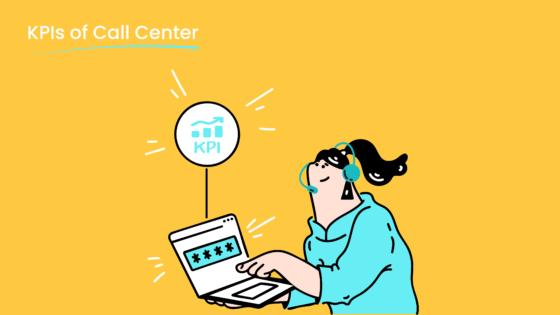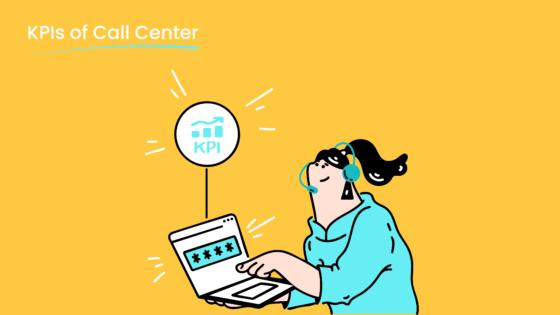How Call Center Agent Productivity Changes Customer Lives

Have you ever waited on hold, hoping for quick help, only to feel frustrated when answers took too long? Call center agent productivity measures how effectively agents use their time and skills to solve customer problems. High productivity leads to better customer experience and faster resolutions. Metrics like First Call Resolution and Customer Satisfaction Score show that strong performance drives loyalty and business growth. Sobot, known for its advanced Sobot AI and Sobot call center solutions, uses technology to help agents deliver an outstanding experience every time.
Call Center Agent Productivity

Definition
Call center agent productivity describes how well agents balance efficiency and quality when helping customers. This concept goes beyond just answering many calls quickly. It means agents solve problems correctly, keep customers happy, and use their time wisely. In the industry, experts define call center productivity as the balance between operational efficiency and the quality of customer interactions. Agents must handle calls efficiently while delivering a positive experience.
Note: Productivity is not only about speed. It also focuses on resolving customer issues and making sure customers feel satisfied after each interaction.
Several factors support high call center agent productivity. These include strong training programs, advanced technology, continuous monitoring of call center metrics, and motivational incentives. For example, Sobot provides a unified workspace and AI-powered tools that help agents access information quickly and resolve issues on the first call. This approach ensures agents can focus on both speed and quality.
| Aspect | Explanation |
|---|---|
| Definition | Call center agent productivity is the balance between operational efficiency and quality of customer interactions, ensuring agents handle calls efficiently while delivering high-quality customer experiences. |
| Key Performance Indicators (KPIs) | Average Handle Time (AHT), First Call Resolution (FCR), Customer Satisfaction (CSAT), Occupancy Rate, Transfer Rate, Call Volume, Idle Time. |
| Quality Focus | Productivity is not just about call volume or speed but also about resolving customer issues effectively and maintaining customer satisfaction. |
| Supporting Factors | Training, technology adoption, continuous monitoring of multiple metrics, and motivational incentives are essential to achieve and measure productivity accurately. |
| Example Metrics | - AHT measures total time spent per call including talk, hold, and after-call work. - FCR measures percentage of issues resolved on first call. - CSAT measures customer satisfaction post-call. - Occupancy rate measures agent engagement and workload balance. |
| Importance | High productivity means superior customer experiences, reduced agent stress, and optimized labor costs. |
Key Metrics
Call center productivity relies on several important call center metrics. These metrics help managers understand how well agents perform and where improvements are needed. The most common call center metrics include:
| Metric Name | Description | Benchmark / Target Range |
|---|---|---|
| First Call Resolution Rate | Percentage of calls resolved on the first interaction, indicating effectiveness in issue resolution. | Above 70% |
| Call Abandonment Rate | Percentage of incoming calls abandoned before being answered, reflecting customer patience and staffing adequacy. | 6.9% - 7.4% |
| Average Time in Queue | Average waiting time customers spend in the queue before being served, measuring responsiveness. | 4.3 to 5.5 seconds |
| Customer Satisfaction Score | Percentage of customers satisfied with the service, indicating quality of interaction. | 75% - 85% |
| Average Handle Time | Average duration of calls including talk, hold, and after-call work, balancing speed and quality. | 1:02 to 4:05 minutes |
| Service Level | Percentage of calls answered within a target time, measuring call center responsiveness. | 80% answered within 20 seconds |
| Percentage of Blocked Calls | Percentage of calls blocked due to capacity limits, indicating call center accessibility. | N/A |
| Agent Utilization Rate | Percentage of paid working hours spent actively handling calls or post-call work, reflecting workload balance. | 75% - 85% |
| Occupancy Rate | Percentage of logged-in time agents spend handling contacts versus idle time, indicating efficiency. | 75% - 85% |
| Average Speed of Answer | Average time taken to answer calls, measuring responsiveness and customer experience. | Target often within 60 seconds |
| Cost Per Call | Average cost incurred per call, reflecting financial efficiency of operations. | N/A |
| Customer Effort Score | Measures how much effort customers expend to resolve issues, indicating service ease and quality. | Higher scores preferred |
These call center metrics give a complete picture of call center productivity. For example, First Call Resolution (FCR) shows how often agents solve problems on the first try. A high FCR means customers do not need to call back, which saves time and increases satisfaction. Average Handle Time (AHT) measures how long agents spend on each call, including talk time, hold time, and after-call work. Managers use AHT to find the right balance between speed and quality.
Customer Satisfaction Score (CSAT) is another key metric. After a call, customers rate their experience, usually from 1 to 5. High CSAT scores show that agents deliver good service. Occupancy Rate and Agent Utilization Rate measure how much time agents spend helping customers versus waiting for calls. These call center metrics help managers spot problems like agent overload or underuse.
Sobot’s Voice/Call Center platform tracks these call center metrics in real time. The system provides dashboards and analytics, helping managers make quick decisions. For example, if the abandonment rate rises, managers can add more agents or adjust call routing. This proactive approach keeps call center productivity high.
Why It Matters
The importance of call center productivity cannot be overstated. High call center agent productivity leads to better customer experiences, lower costs, and happier employees. When agents work efficiently, customers spend less time waiting and get their problems solved faster. This builds trust and loyalty.
Tip: Companies that monitor and improve call center productivity see higher customer satisfaction and stronger business results.
Research shows a direct link between call center productivity and business performance. For example, when agents answer more calls per hour, customer wait times drop, and satisfaction rises. Optimizing Average Handle Time (AHT) helps companies use resources better and reduce costs. Maintaining a healthy Occupancy Rate ensures agents stay productive without burning out.
High call center productivity also improves First Call Resolution rates. Well-trained agents with access to the right tools can solve problems on the first call. This reduces repeat calls, lowers operational costs, and boosts agent morale. Sobot’s unified workspace and AI-powered solutions give agents instant access to customer data, making it easier to resolve issues quickly.
However, several reasons for low call center productivity exist. High agent turnover, long wait times, and outdated technology can slow down operations. Burnout from repetitive tasks and lack of knowledge management also hurt performance. Addressing these reasons for low call center productivity requires a mix of training, technology upgrades, and better workflow design.
| Productivity Metric | Description | Business Impact |
|---|---|---|
| Calls Answered Per Hour | Measures the number of calls handled by each agent per hour, indicating individual and team efficiency. | Higher calls answered per hour increase service capacity and reduce customer wait times, improving customer satisfaction and business throughput. |
| Call Availability | Time agents are available to take calls, excluding breaks and training. | Maximizing availability ensures customer demand is met promptly, enhancing service levels and operational efficiency. |
| Average Handling Time (AHT) | Time spent on each call, balancing speed and quality. | Optimizing AHT helps allocate resources effectively and reduces bottlenecks, improving customer experience and operational costs. |
| Occupancy Rate | Percentage of time agents are actively handling calls and related tasks. | Maintaining optimal occupancy maximizes productivity without causing burnout, supporting sustainable performance and retention. |
Many companies face reasons for low call center productivity, such as high call volumes, agent burnout, and technology issues. Solutions include better training, intelligent call routing, and advanced platforms like Sobot’s Omnichannel Solution. These tools automate repetitive tasks, provide real-time analytics, and help agents focus on complex issues. By addressing the reasons for low call center productivity, businesses can improve both agent performance and customer satisfaction.
The Science of Call Center Productivity

Performance Metrics
Call center productivity depends on clear and reliable performance metrics. These metrics help managers understand how well agents serve customers and where improvements are needed. Recent research highlights the importance of expected net promoter score (xNPS), which uses AI to predict customer satisfaction without surveys. Difficulty-adjusted agent performance scores also give a fair view of agent work by considering conversation complexity and customer behavior. Aptitude forecasting predicts how agents might perform in the future, helping managers plan ahead. These predictive metrics allow teams to personalize service and spot trends before they become problems. Studies show that measuring call center performance with these advanced tools leads to better customer experiences and smarter business decisions.
Tip: Predictive metrics like xNPS match actual customer NPS outcomes in over 85% of cases, even though most customers skip post-call surveys.
Technology and Tools
Modern technology plays a big role in call center productivity. Dialing software removes delays, making calls smoother. AI automates routine tasks, so agents can focus on helping people. Augmented intelligence lets agents spend more time showing empathy. Real-time agent assist tools give instant coaching and alerts. Speech analytics score every call, improving quality checks. AI-powered chatbots and virtual agents offer 24/7 support, solving simple issues right away. Unified workspaces bring all customer data together, reducing handle time and boosting productivity. These tools help track call center metrics and drive continuous improvement.
- AI in contact centers can increase agent productivity by 14% and cut costs by up to 40%.
- Augmented reality support can raise first-call resolution by 35% and lower technician visits.

Sobot Voice/Call Center
Sobot’s Voice/Call Center solution stands out in call center productivity. The platform offers an all-in-one agent workspace, which increases reception efficiency by 48%. Agents see a 41% drop in average handle time, which lowers costs and speeds up service. First-contact resolution rates improve by 54%, making customers happier and reducing repeat calls. Sobot’s system stays reliable with 99.99% uptime. Fast integration with CRM systems means agents spend less time learning new tools. AI-powered features like intelligent IVR and Voicebot help automate ticketing and guide agents in real time. These features make measuring call center performance easier and more accurate. Sobot’s user-friendly design and cloud-based setup allow businesses to scale quickly and keep operations smooth.
Call Center Performance and Customer Impact
Customer Satisfaction
Call center productivity shapes the customer experience in every interaction. When agents respond quickly and solve problems on the first call, customers feel valued. A high customer satisfaction score often results from low wait times and helpful service. Studies show that reducing the average speed of answer from 60 to 25 seconds can boost satisfaction scores. Customers also care about empathy and clear communication. Productive agents who balance speed with quality help raise the customer satisfaction score and Net Promoter Score. Real-time monitoring and feedback loops allow managers to spot issues and coach agents, which leads to better experiences. Sobot’s unified workspace and AI-powered tools help agents access information fast, improving first call resolution and making each experience smoother.
- Faster response times (under 30 seconds) increase satisfaction.
- High first call resolution rates (above 70%) lead to better retention.
- Quality assurance scores link directly to higher Net Promoter Scores.
Resolution Speed
Resolution speed is a key part of call center productivity. Customers want their problems solved quickly. High first call resolution rates mean fewer repeat calls and less frustration. In industries like insurance, companies that use automation and AI for faster service see higher customer retention. Quick answers build trust and reduce the risk of losing customers. Research shows that even a 5% increase in retention can boost profits by up to 95%. Sobot’s Voice/Call Center uses smart routing and AI to help agents resolve issues faster, which improves both the customer experience and the customer satisfaction score.
Loyalty and Trust
Call center productivity builds loyalty and trust over time. When agents handle calls with empathy and accuracy, customers remember the positive experience. Personalized coaching and real-time feedback help agents improve their skills. AI-powered tools guide agents during calls, reducing mistakes and making service more reliable. A culture of feedback and recognition keeps agents motivated, which leads to better customer experiences. Sobot’s omnichannel solutions support agents with the right tools and training, helping them deliver consistent, high-quality service. This approach increases customer loyalty and trust, as customers know they can count on a great experience every time.
Real-World Examples
Sobot and Agilent
Sobot partnered with Agilent, a leader in life sciences and diagnostics, to transform their call center productivity. Agilent faced high volumes of customer inquiries and needed a solution that could improve efficiency and customer experience. Sobot introduced an omnichannel workbench and an AI-powered chatbot. These tools automated routine tasks and allowed agents to focus on complex issues. The results were impressive:
| Measurable Outcome | Result |
|---|---|
| Efficiency increase | 6X |
| Overall cost reduction | 25% decrease |
| Customer satisfaction improvement | 30% increase |
| Self-service usage increase | 45% increase |
| Interaction automation | 70% of interactions |
| Average handling time reduction | 40% decrease |
| 24/7 service availability impact | 50% improved access |
| Sales growth | 20% increase |

Agilent’s call center productivity improved dramatically. Agents handled more inquiries in less time. Customers enjoyed faster responses and better service. The AI chatbot managed 70% of interactions, which freed agents to deliver a more personal experience. The company also saw a 25% drop in costs and a 30% rise in customer satisfaction. These results show how the right technology can change both business operations and the customer experience.
Industry Scenarios
Many industries see big changes when they focus on call center productivity. In retail, companies like Ace Hardware use omnichannel solutions to connect online and in-store experiences. Customers can research products, attend events, and choose how they shop. This seamless approach improves customer experience and builds loyalty.
In the luxury resale industry, The RealReal automated frequently asked questions using integrated CRM tools. This reduced agent workload and led to faster resolutions. Customers found answers quickly, which improved their overall experience.
Wayfair, a furniture and home décor company, gave agents access to customer data during calls. This change boosted call center productivity and allowed agents to help more customers. The company saw productivity gains equal to adding 38 new employees in just six months.
In finance, customers expect smooth, frictionless service. Companies use AI and data analytics to simplify processes like loan applications. This focus on call center productivity reduces wait times and makes the customer journey easier.
The gaming industry also benefits from high call center productivity. Players want quick help and friendly support. Companies use omnichannel speech analytics and real-time feedback to meet these needs. Across all industries, customers value empathy and helpfulness more than short wait times. Productive agents who listen and respond with care create a positive experience every time.
Tip: Improving call center productivity often leads to lower costs, better agent morale, and higher customer satisfaction. Companies can achieve this by using automation, training, and unified workspaces.
How to Improve Call Center Productivity
Training and Coaching
Training and coaching play a big role in call center productivity. Companies use personalized feedback to help each agent grow. Skill development frameworks give agents a clear path to improve. Many centers now make coaching part of daily work, using short sessions and performance tracking. Setting clear KPIs and using data analytics helps agents know what to aim for. AI-powered conversation analysis finds moments that need coaching and points out skill gaps. Real-time guidance systems support agents during calls, making them more confident and reducing mistakes. Sobot’s Voice/Call Center platform uses these methods to help agents learn quickly and work better.
Tip: Regular coaching and feedback keep agents engaged and motivated, which boosts call center productivity.
AI and Automation
AI and automation change how to improve call center productivity. Automation handles routine tasks, so agents can focus on complex problems. AI gives agents customer history and predicts what customers need. Real-time AI tools listen to calls and suggest next steps, lowering error rates. Bots answer simple questions, while humans solve harder issues. This teamwork improves efficiency and customer satisfaction. Sobot’s Voice/Call Center uses AI-powered speech analytics and smart routing to help agents work faster and with fewer errors. These tools also help companies save money and reduce agent burnout.
| Impact Area | Benefit |
|---|---|
| Agent Efficiency | Handle time drops by 20% |
| Error Reduction | Fewer mistakes and better data accuracy |
| Cost Savings | Lower costs from less manual work |
| Customer Satisfaction | 10% higher satisfaction scores |
Omnichannel Solutions
Omnichannel solutions help companies reach customers on any channel—phone, chat, email, or social media. These systems give agents a full view of each customer’s history, making service faster and more personal. Omnichannel platforms like Sobot’s unify all messages and data in one workspace. This reduces repeat contacts and average handle times. Companies see up to 40% shorter handle times and 25% better resolution rates. Real-time analytics and dashboards help managers spot trends and fix problems quickly. Consistent service across channels builds trust and loyalty, which drives call center productivity.
Note: Unified workspaces and analytics make it easier for agents to find information and solve problems fast.
Call center productivity means agents work efficiently and deliver great service. Research shows that 87% of contact centers see customer satisfaction as their top goal. The table below highlights key trends:
| Key Takeaway | Supporting Detail |
|---|---|
| Generative AI adoption | 80% of organizations will use AI by 2025 to boost call center productivity |
| After-call work reduction | AI can cut after-call time by 35% |
| Real-time analytics | Data-driven decisions improve performance |
Sobot’s solutions help companies use AI, real-time analytics, and unified workspaces to improve call center productivity. To achieve the best results, organizations should monitor agent performance, invest in training, and use omnichannel tools. Explore Sobot’s platform to unlock higher call center productivity and better customer outcomes.
FAQ
What is call center agent productivity?
Call center agent productivity measures how well agents use their time and skills to help customers. High productivity means agents solve problems quickly and keep customers happy. Sobot’s Voice/Call Center tracks this with real-time dashboards and analytics.
How do companies measure call center agent productivity?
Companies use metrics like First Call Resolution, Average Handle Time, and Customer Satisfaction Score. Sobot’s platform provides these metrics in easy-to-read reports. Managers use this data to spot trends and improve agent performance.
Why does call center agent productivity matter for customers?
Call center agent productivity affects wait times, problem resolution, and customer satisfaction. When agents work efficiently, customers get faster answers and better service. Sobot’s solutions help agents respond quickly and accurately.
How can technology improve call center agent productivity?
Technology like AI, automation, and unified workspaces helps agents find information fast and handle more calls. Sobot’s Omnichannel Solution uses AI-powered chatbots and real-time analytics to boost call center agent productivity by up to 30%.
What makes Sobot different in improving call center agent productivity?
Sobot offers a stable system with 99.99% uptime, global telephony, and seamless CRM integration. Its AI-powered tools and unified workspace help agents work smarter. Sobot’s solutions have increased call center agent productivity for brands like Agilent and Luckin Coffee.
Note: For more details on Sobot’s products, visit Sobot’s official website.
See Also
How Artificial Intelligence Transforms Customer Support Services
Efficient Operation Strategies For Automated Call Centers
Top Techniques For Managing Call Center Quality Standards
Effective Methods For Supervising Live Chat Support Teams
Improving Call Center Results Through Performance Monitoring
